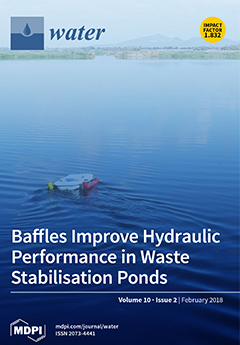Reference evapotranspiration (
ETref) is an important study object for hydrological cycle processes in the context of drought-flood risks of the Huai River Basin (HRB). In this study, the FAO-56 Penman–Monteith (PM) model was employed to calculate seasonal and annual
ETref based on 137 meteorological station data points in HRB from 1961 to 2014. The Mann–Kendall (MK) trend analysis was adopted together with Theil–Sen’s estimator to detect tendencies of
ETref and climate factors. Furthermore, a developed differential equation method based on the FAO-56 PM model was applied to quantify the sensitivities of
ETref to meteorological factors and their contributions to
ETref trends. The results showed that the
ETref demonstrated a strong spatially heterogeneity in the whole HRB at each time scale.
ETref showed a significant decreasing trend in the upper-middle HRB and Yi-Shu-Si River Basin, especially at the annual time scale, in growing season and summer, while a generally increasing trend in
ETref was detected in the lower HRB, and the significance only showed in spring. These phenomena could be reasonably explained by a significantly increasing mean temperature (
TA), a significantly decreasing wind speed (
WS), solar radiation (
SR), and a slightly decreasing relative humidity (
RH). The most sensitive factor to
ETref was
RH in most sub-regions and most time scales, except in the growing season and summer. Based on the developed differential equation method, the dominant factor of the decreasing
ETref was
WS in the annual time scale, spring, autumn, and winter in most sub-regions, except the lower HRB, which then shifted to
SR in the growing season and summer. However, in the lower HRB, the significantly decreasing
RH was the most dominant factor, especially in the annual time scale, growing season, and spring, which might be responsible for the slightly increasing
ETref there.
Full article





